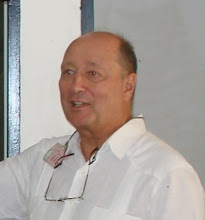Yesterday I drove to Pignon, a small town to the north of Deschapelles, with two trucks. In one, we had the six-person orthopedics team from Peachtree Orthopedics in Atlanta, which, in various configurations of its members, has supported HAS since its first years. They had come as an autonomous group, with two surgeons, two nurses and an anesthesiologist, and they operated for several days in one of the ORs, addressing the needs of our most serious cases.
They had come in to Haiti through Cap Haitian in the north of the country, on a private plane, carrying all of the equipment and materials which they would need. The ride to HAS from Cap Haitian is a bone-jarring five hours. Our goal yesterday was to evaluate a different method of getting passengers and medical without trying to go through the Port au Prince airport, which has limited access.
 The plane which had brought the team to Haiti was piloted by a volunteer from Atlanta, and he was returning to bring the team back. He had identified an airfield in Pignon which looked appropriate, and which was only 3 ½ hours away from Deschapelles, over better roads. We arrived at Pignon, and as one of the doctors noted, it was possible to understand why they were called airfields. The two turboprops landed on a 3700-foot grass field, following a low sweep by the lead plane, which scared the goats away. We offloaded the two planes which had been stuffed to gills with medical supplies and medicines, and the surgical team went aboard to return home.
The plane which had brought the team to Haiti was piloted by a volunteer from Atlanta, and he was returning to bring the team back. He had identified an airfield in Pignon which looked appropriate, and which was only 3 ½ hours away from Deschapelles, over better roads. We arrived at Pignon, and as one of the doctors noted, it was possible to understand why they were called airfields. The two turboprops landed on a 3700-foot grass field, following a low sweep by the lead plane, which scared the goats away. We offloaded the two planes which had been stuffed to gills with medical supplies and medicines, and the surgical team went aboard to return home. Another supplpy flight arrived last night at Port Au Prince. This Boeing 737 had been chartered by the Bouchard family from Pittsburgh and was filled with personnel as well as medical supplies for HAS and other Pittsburgh-related health care organizations that operate in Haiti. This was just one of several flights which have made huimanitarian trips to Haiti this week, and an example of both the generosity but also the logistic expertise of the Bouchards. The plane arrived after dark, and the airport was closed, so the teams remained in the arrival lounge until dawn, and they are making theor way out to their respective work sites in rented trucks.
While much has been seen in the media about the massive airlifts of supplies and personnel in Port-au-Prince by major international relief organizations, there is another parallel, and less well known, process through which volunteers have come in to Haiti, made a significant difference, and returned home, unheralded by the public, but essential to the overall effort.
When we got back to the hospital and off loaded and inventoried the supplies, I went to the Alumni House, which has served as the residence and dining hall for volunteers, I had dinner with three doctors who had served at HAS a number of times in the past, and who have been supporting the care of patients before and after surgeries, two trauma surgeons and an anesthesiologist, who had found their way here on their own, supported by a New York-based group which organizes disaster response teams, an Army medic from Pittsburgh who had recently retired and who hitchhiked in from the Dominican Republic, and who was assisting the surgical teams in the ORs, and a long-term internal medicine doctor who has been supporting the needs of our regular patients, who continue to come for diagnoses and for return visits, scheduled before the quake. In the next house, a team of surgeons from Sherbrooke University in Montreal were taking a break before returning to complete several more cases.
All of these clinicians have melded almost seamlessly with the Haitian staff; many have been here before, and know how to fit in. Others are adaptable and flexible, and adjust their activities to the existing patterns. All of them work long hours, and make substantial contributions to the hospital’s efforts to manage the surge of unexpected patients. In a future blog we will list all of their names and affiliations, with an attempt to thanks them adequately for their good will and concern.
After dinner I went back to the hospital to visit the patients; I have come to know them well, and they joshed me about not having been to see them all day, and told me how they were recovering from their surgery, or shared their pain as they wait for their turn. They are confident that they will recover; they have seen many of their roommates go home, and they know that they will be able to do so also. In the meantime, they offer a beautiful smile and a word of encouragement to those of us who work to serve their needs.



